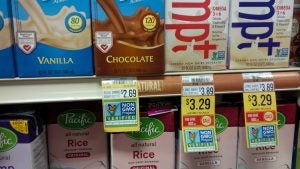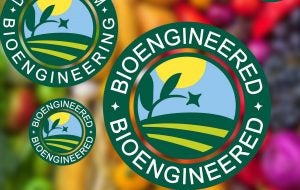Dawning with the new year is a new food-labeling requirement: the U.S. Department of Agriculture’s bioengineered label. You’ll find the labels on foods that contain detectable genetic material that has been modified by certain lab techniques that can’t be created through conventional breeding or found in nature.
Congress passed the National Bioengineered Food Disclosure Law in July of 2016. It directed the USDA to establish a mandatory standard for disclosing foods that are or may be bioengineered. Then-Agriculture Secretary Sonny Perdue announced the disclosure standard in December of 2018. And the labeling requirement went into effect on January 1, 2022, after initially being delayed due to the COVID-19 pandemic. It applies to food manufacturers, importers, and certain retailers.
Related: What the USDA’s bioengineered label says — and doesn’t say — about our food
It’s no secret that I was absolutely and unequivocally opposed to a mandatory labeling standard for genetically modified crops. In principle, I still am, because there’s no reason for it. It doesn’t give consumers any meaningful information relevant to their food choices — the whole point of a regulated food label.
GMO crops are substantially equivalent to their non-GMO counterparts in every way, including safety. This is confirmed by a substantial body of research and decades of consumption by animals and humans. Despite the doomsday predictions by activists, GMOs have benefited farmers, consumers, and the environment.
My resistance to a national labeling standard eased in the years and months leading up to the Congressional action — the situation was becoming untenable. Vermont’s legislature passed an oppressive and confusing labeling requirement in the spring of 2013. In the months leading up to its implementation, Vermont’s residents learned they would lose nearly 3,000 products from stores due to the law. But there were no signs of the state repealing the requirement or delaying its effective date.
And at the same time well-funded organizations opposed to GMOs were in full force. They were telling consumers that “big ag” was trying to hide something, and demanding that consumers have the information so they could make an informed choice. Not surprisingly, as the disinformation campaigns grew, The Non-GMO Project’s monarch-butterfly label was finding itself on more and more items.

So when Congress finally stepped in, it felt like an important pause. It was clear that having a state-by-state approach to mandatory labeling wasn’t a viable option. Not only would such a scheme make it impossible for companies to comply, it also allowed fringe voices to shape the narrative on a more local level. In other words, there was nothing scientific about Vermont’s law.
I was finally convinced the national labeling law was the right approach when I first saw the USDA’s BE label. The agency ditched the loaded “GMO” term and replaced it with the more neutral terms “bioengineered” and “bioengineering.” Instead of a skull and crossbones, the icon is bright, happy, and emphasizes the technology’s sustainability link. The label isn’t a warning; it’s a signal of something good!

Will it silence the activists who want to end the use of biotechnology? Nope, they’re still complaining (which is proof this was never about the public’s “right to know”). They’ll continue to complain, too. And as long as they can squeeze money from their donors, they’ll continue lying to the public about the alleged dangers and perils of GMOs.
But I’m predicting this will be the end of the anti-GMO movement’s power. If consumers want to avoid BE crops, they can look for products without the label. The label will soon become mainstream and normal. It’ll be a regular part of our groceries and people will stop worrying about it.
So I’m welcoming the BE labeling requirement. I’m excited to see it for the first time on my groceries, and I’ll make sure to support companies that use it.
Amanda Zaluckyj blogs under the name The Farmer’s Daughter USA. Her goal is to promote farmers and tackle the misinformation swirling around the U.S. food industry.



